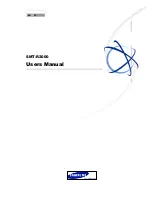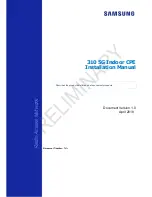
Stellar AP | Deployment & Configuration & Troubleshooting Guide
15 |
P a g e
All
rig
hts
r
es
er
ve
d. Pass
ing
on
a
nd
co
py
ing
o
f th
is
do
cu
m
en
t, u
se and
co
m
m
un
ic
ati
on
o
f i
ts c
on
ten
ts
no
t p
er
m
itte
d
w
itho
ut
w
ritte
n a
uth
or
izati
on
fr
om
H
AN
-N
etw
or
ks.
In the right angle corner of a hallway, mount the AP at a 45 degree angle to the two
hallways as shown in the figure on the right. The Alcatel-Lucent AP internal antennas
are not omnidirectional, and will cover a larger area if mounted this way.
3.1.3
Interferers
802.11b/g/n standards share the unlicensed Industrial, Scientific and Medical (ISM)
band (2.4 GHz) with a number of other wireless technologies. Bluetooth devices and
microwave ovens are the most common ones and can be found on a site where
WLAN will be deployed. AP placement should be chosen in order to minimize
interferences on the WLAN system’s
performance. Interferences by WLAN on other
technologies is not discussed, except cohabitation with DECT APs. For more
information, see Cohabitation with DECT APs.
Cohabitation with Bluetooth Devices
Bluetooth technology is based on frequency hopping over 79 channels in the 2400
to 2483.5 MHz band.
There are 3 power classes
-
Power class 1: max transmit power: +20 dBm (range 100 m)
o
Voice application: do not mount an Alcatel-Lucent AP within 10 meters of a
power class 1 Bluetooth AP. The number of maximum simultaneous calls
on WLAN AP can decrease significantly if a Bluetooth AP class 1 emits
within 10 meters.
o
802b/g/n data application: for maximum throughput, do not mount an
Alcatel-Lucent AP within 10 meters of a power class 1 Bluetooth AP.
802.11b/g/n data throughput is reduced when a user within 10 meters
from a class 1 Bluetooth device in use. To ensure 80% of the maximum
















































